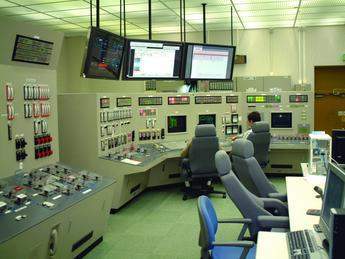Earlier this year a reactor coolant outlet temperature of 950 °C was achieved at the High Temperature Engineering Test Reactor (HTTR) in Japan – a world first, and potentially an important step towards a nuclear fuelled hydrogen economy.

The HTTR (High Temperature Engineering Test Reactor), with a thermal power of
30 MW, is a research facility constructed by the Japan Atomic Energy Research Institute (JAERI) for development of high temperature gas-cooled reactor (HTGR) technology and nuclear heat utilisation technology as well as for irradiation of materials under high temperature conditions. The first criticality of the HTTR was attained on 10 November 1998. The full power of 30 MW and a reactor outlet coolant temperature of 850°C were achieved on 7 December 2001. Rated power operation and safety demonstration tests started in FY2002.
High temperature programme
JAERI embarked on a programme of high temperature test operation of the HTTR on 31 March 2004, with the aim of achieving the promised reactor outlet coolant temperature of 950°C. At 14:27 on 19 April the HTTR successfully reached this reactor outlet coolant temperature at its rated thermal power of 30 MW.
Looking forward, it is planned to connect a hydrogen production system to the HTTR in 2008, allowing hydrogen production by nuclear heat to be demonstrated for the first time in the world.
The HTTR reactor building is 48m by 50m with two floors above ground and three below.
Major components such as the reactor pressure vessel, primary cooling system components etc. are all inside the containment vessel. The construction of the reactor building began in March 1991 and all major components were installed by March 1996.
Core design
Block type fuel, rather than a pebble bed, is adopted in the HTTR. The reasons for this choice were advantages in terms of fuel zoning, ability to control of coolant flow rate in each column, easy insertion of control rods, and irradiation flexibility in the core. Core components and reactor internals were installed in the reactor pressure vessel from May to August 1995.
An HTTR fuel assembly consists of fuel rods and a hexagonal graphite block,
360 mm across width of flats and 580 mm
in length.
The fuel assembly has three dowels on the top and three mating sockets at the bottom to align with other assemblies. TRISO
coated fuel particles with UO2 kernel,
about 6 wt% in average enrichment and
600 µm in diameter, are dispersed in the graphite matrix and sintered to form a fuel compact. Fuel compacts are contained in
a fuel rod, 34 mm in outer diameter and
577 mm in length.
Fuel rods are inserted into vertical holes made in the graphite block. Helium gas coolant flows through gaps between the holes and the rods.
Reactor cooling system
The reactor cooling system of the HTTR is composed of a main cooling system (MCS), an auxiliary cooling system and a vessel cooling system. The MCS consists of a primary cooling system, a secondary helium cooling system and a pressurised water cooling
system.
Under normal conditions, the heat of 30 MW generated in the reactor core is removed by the MCS.
